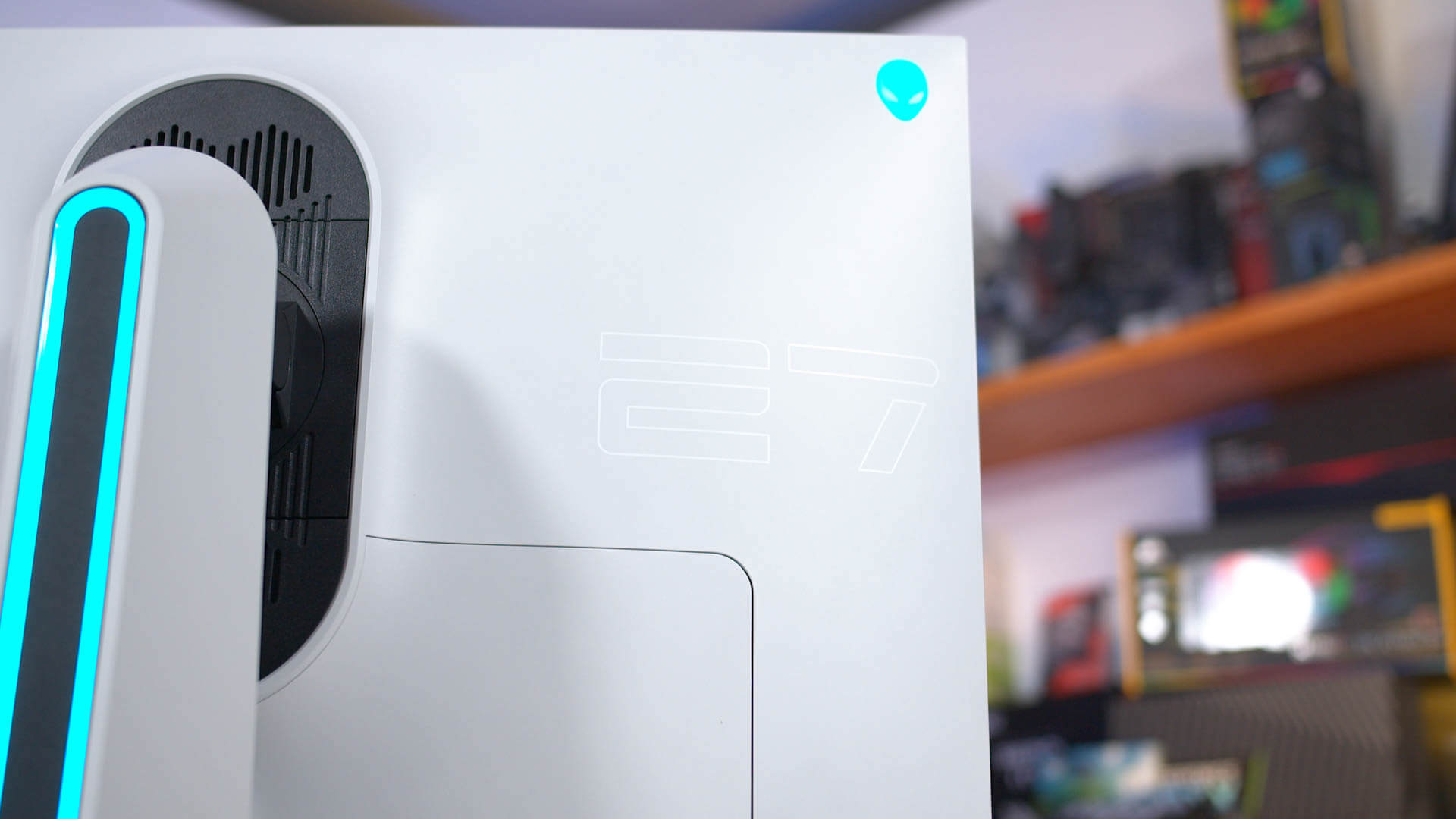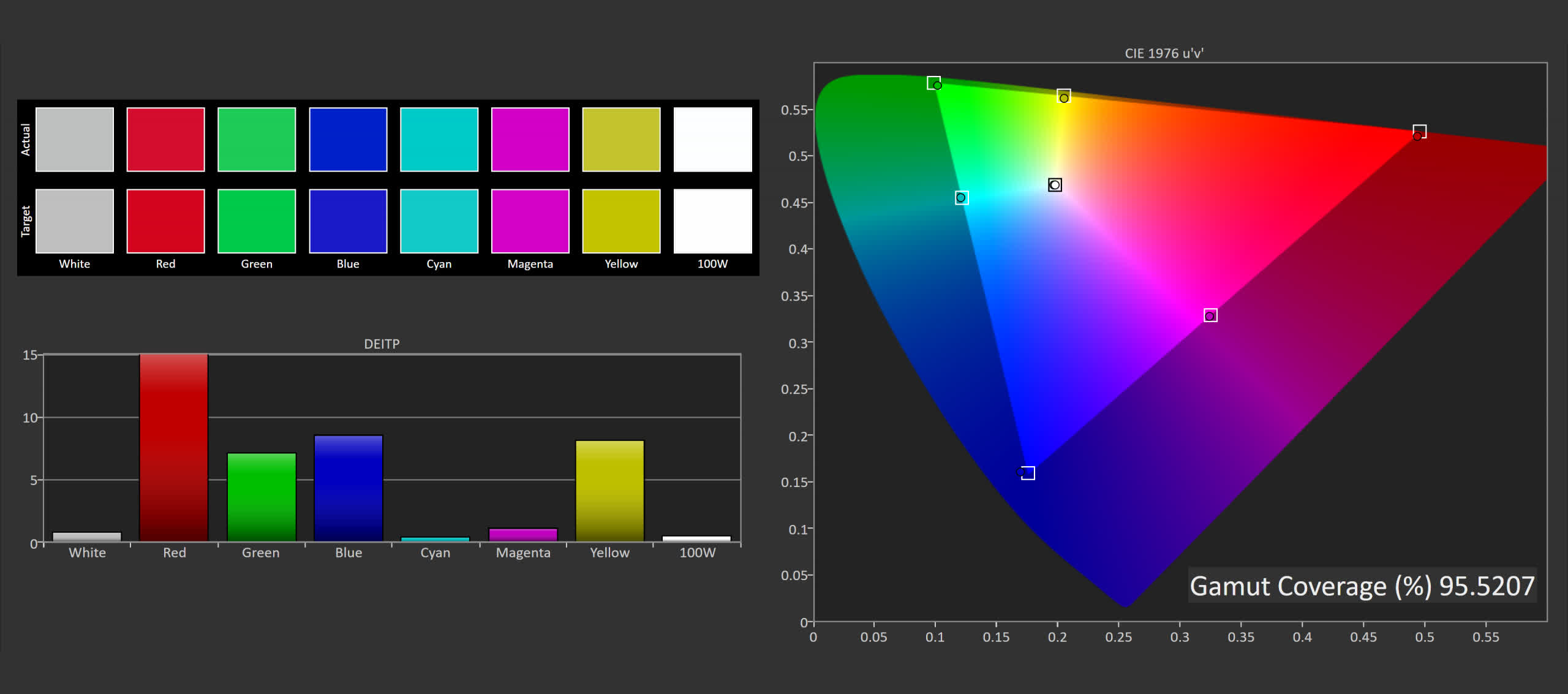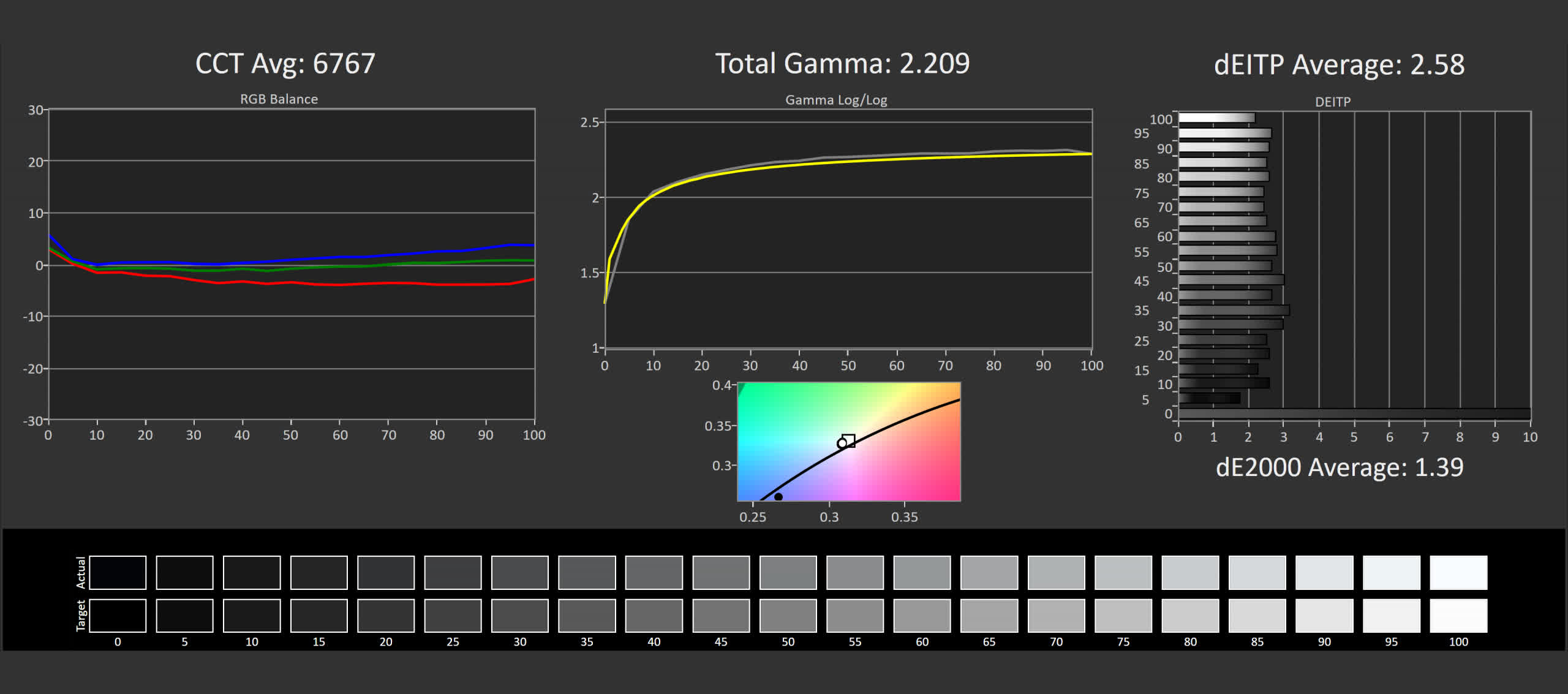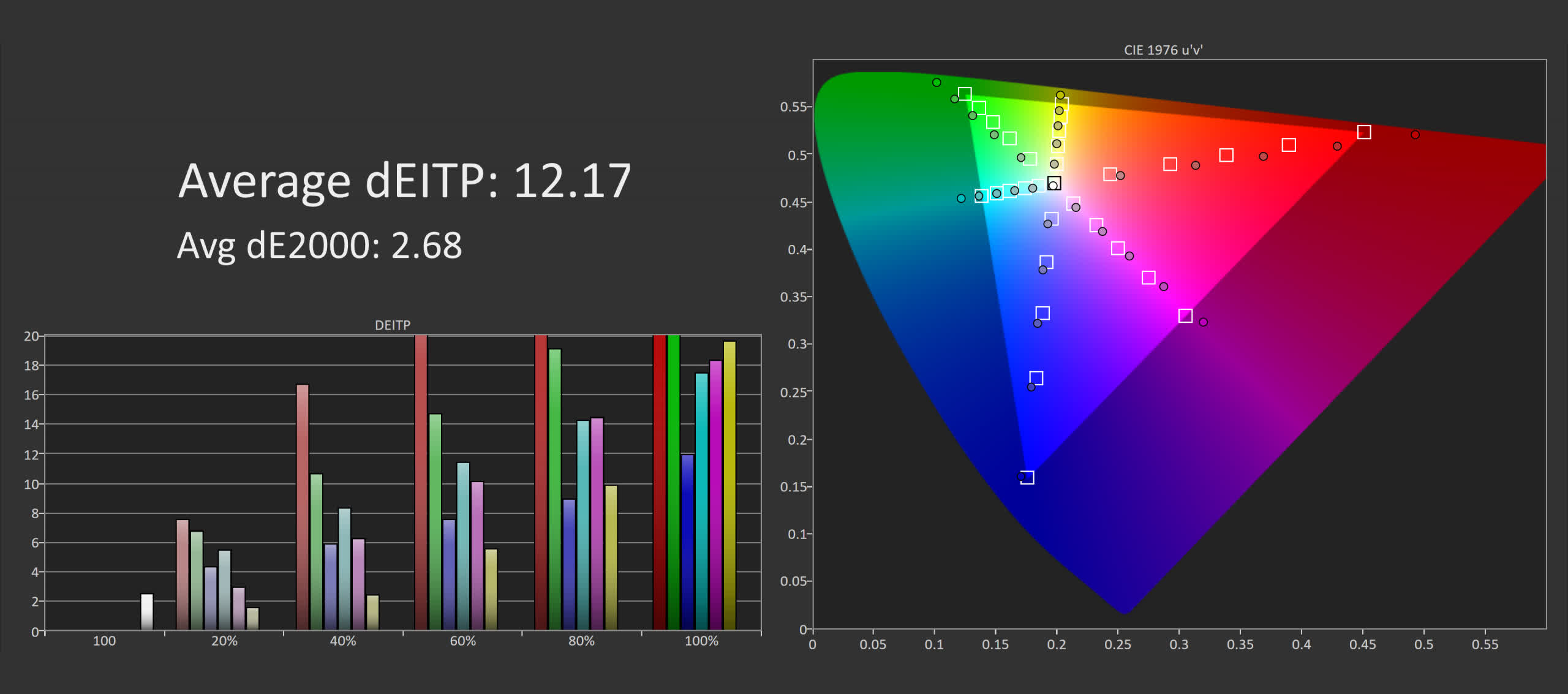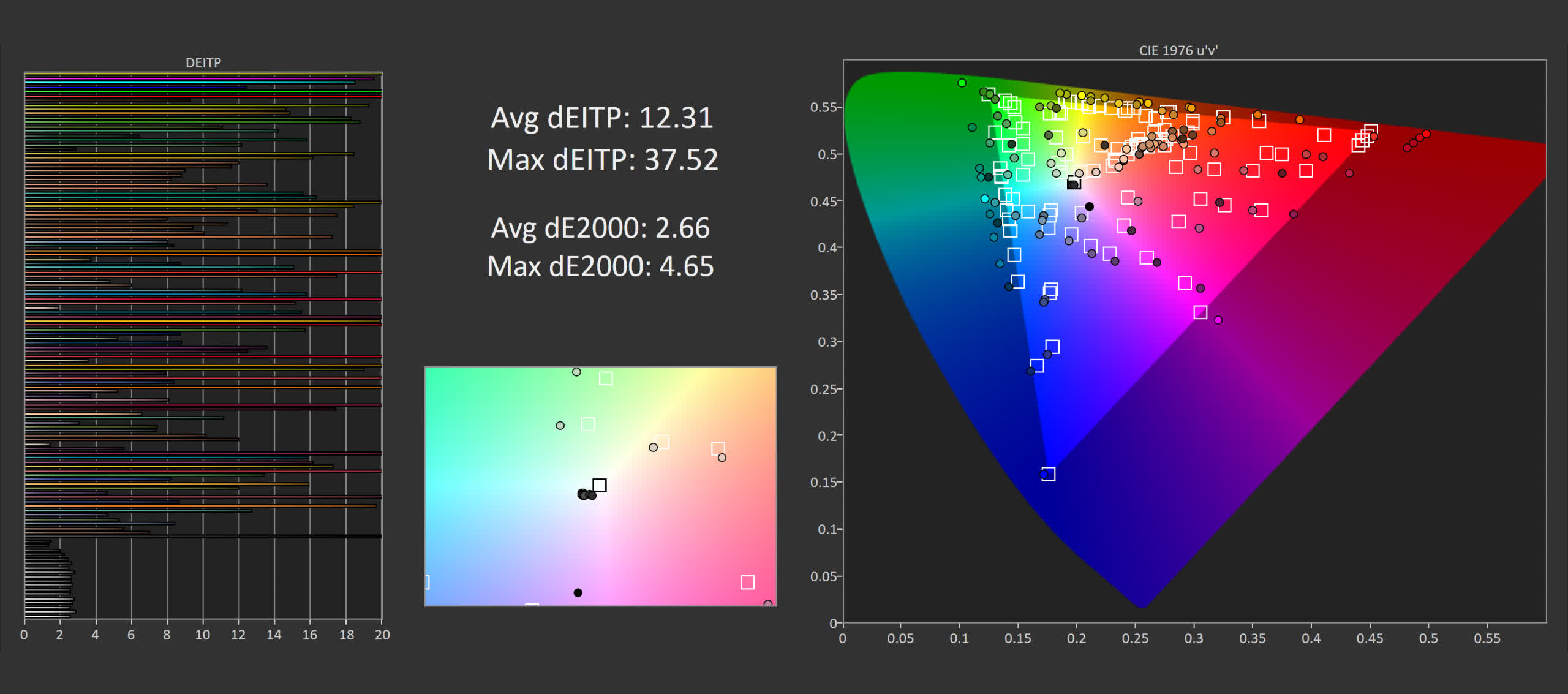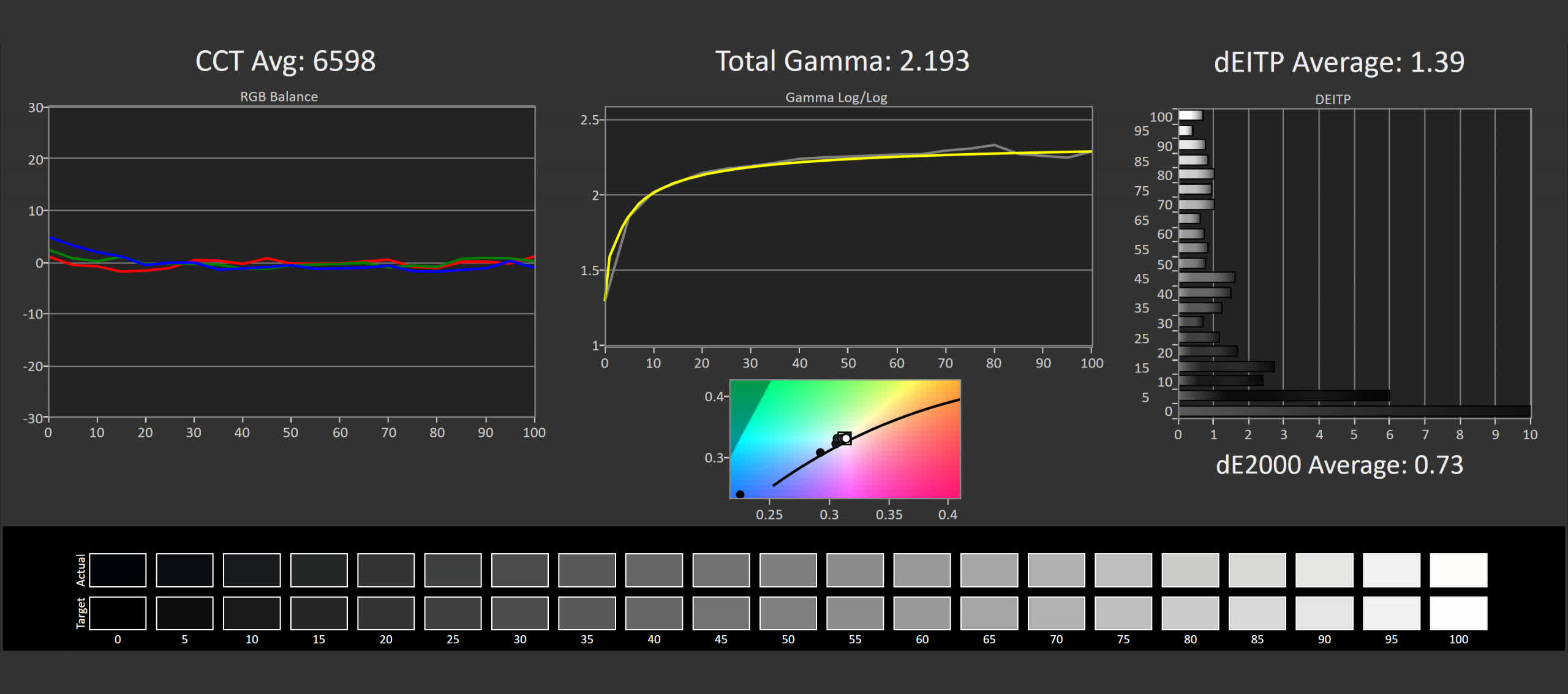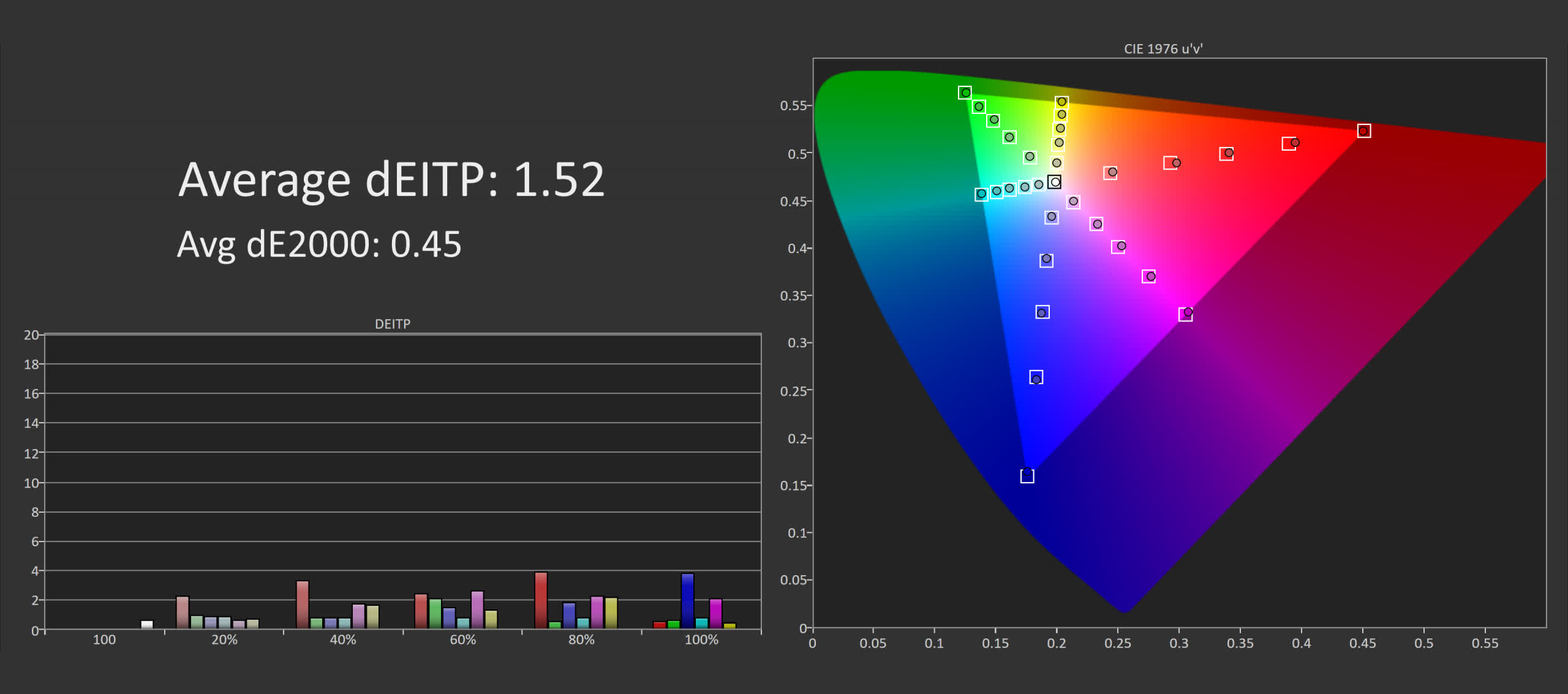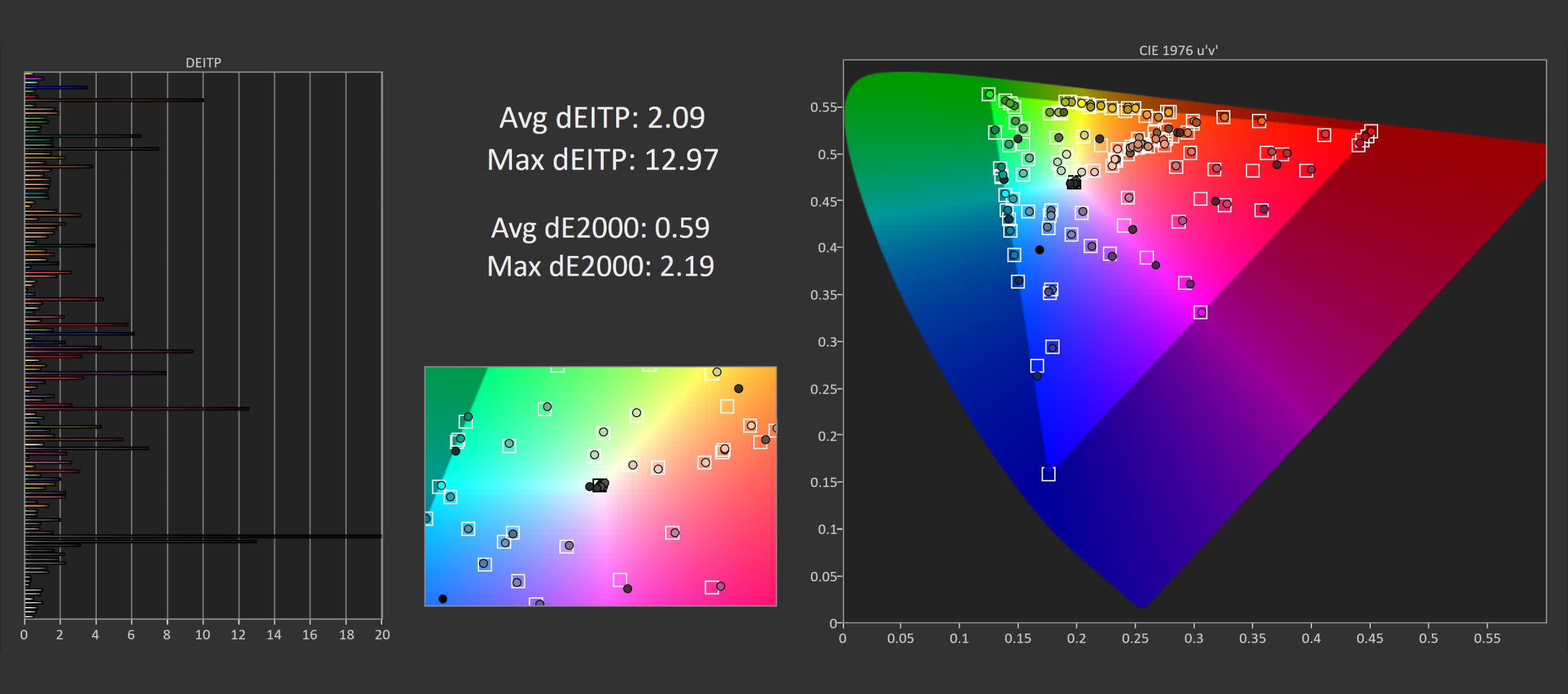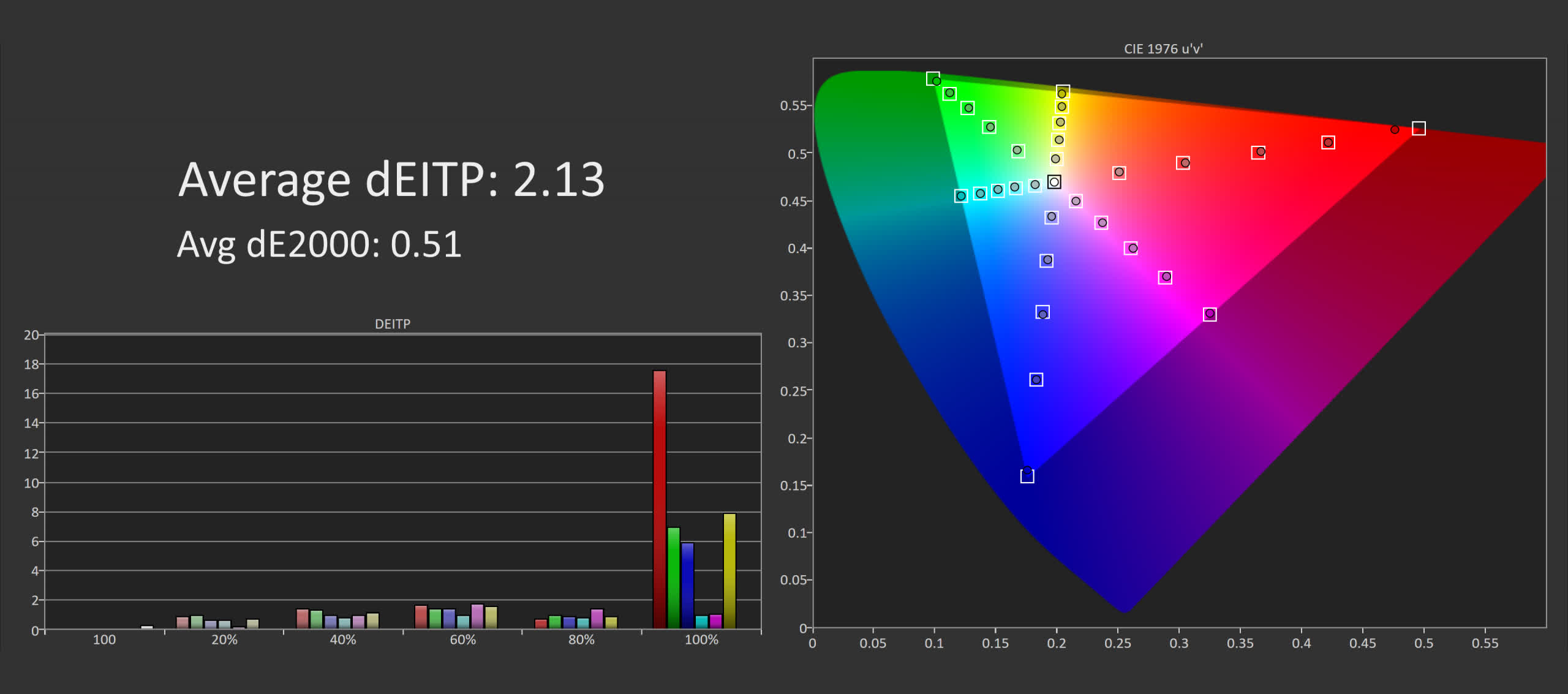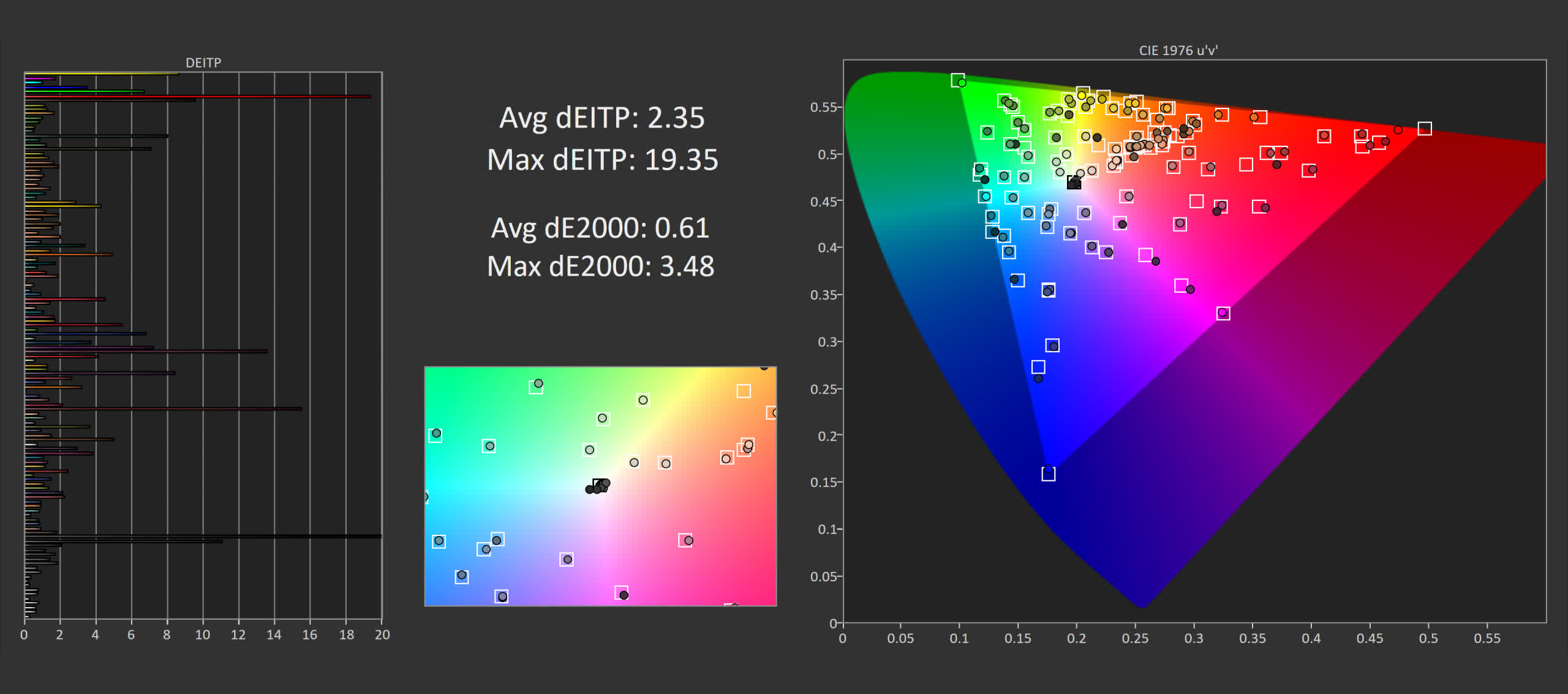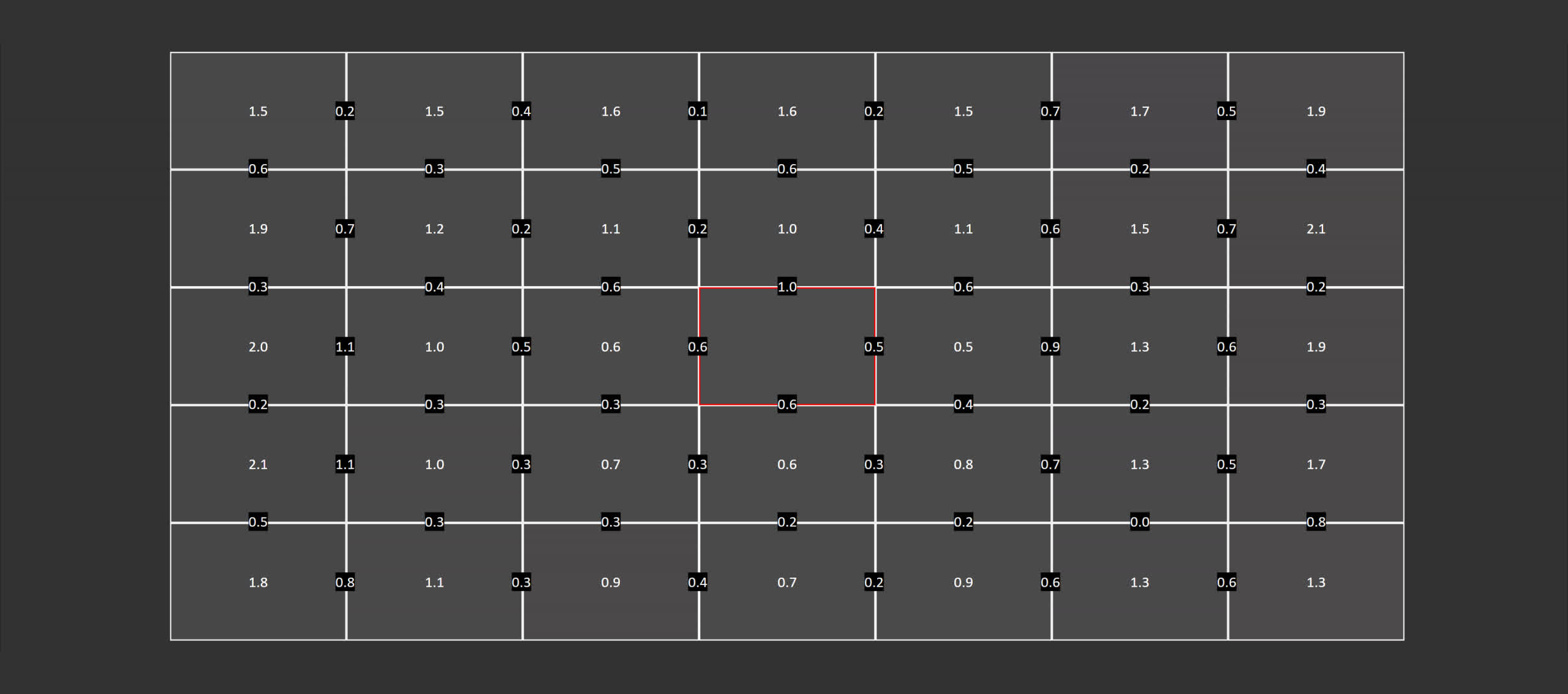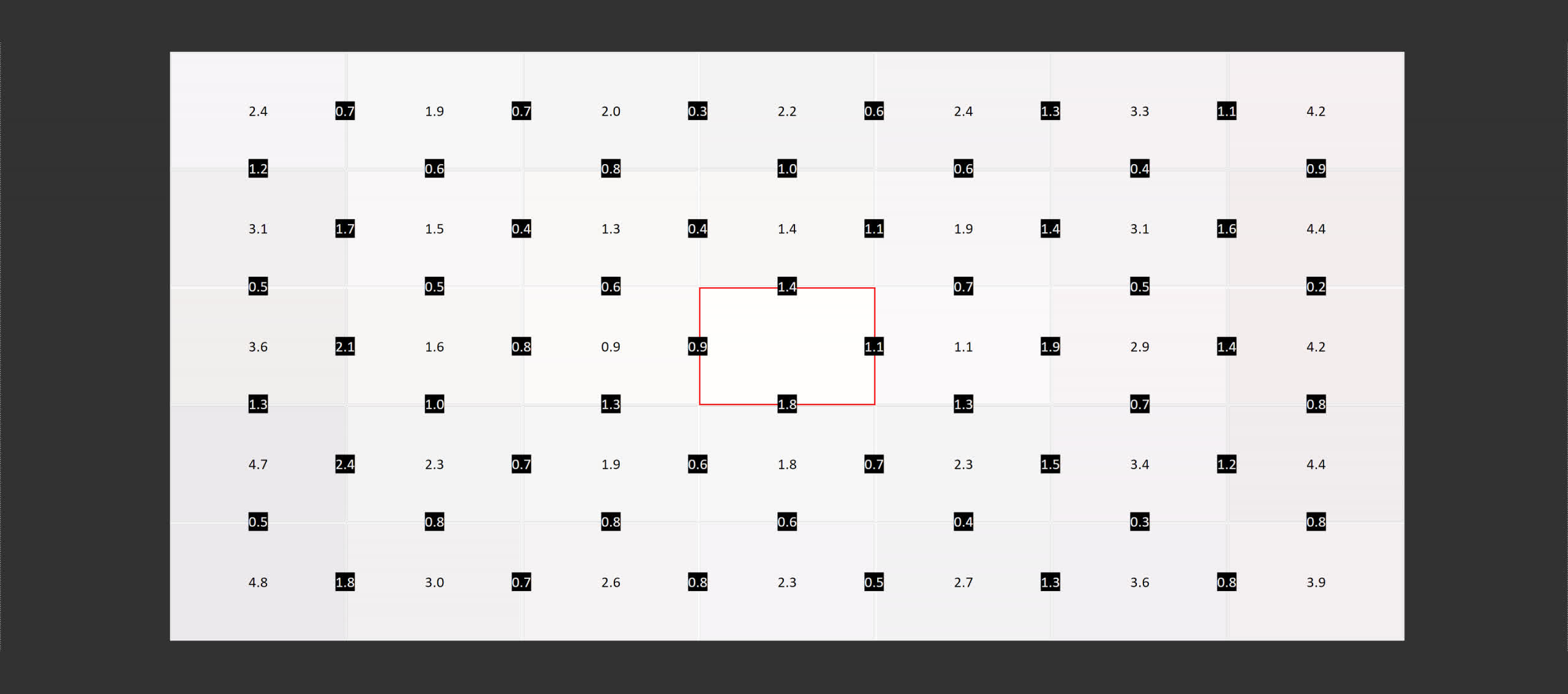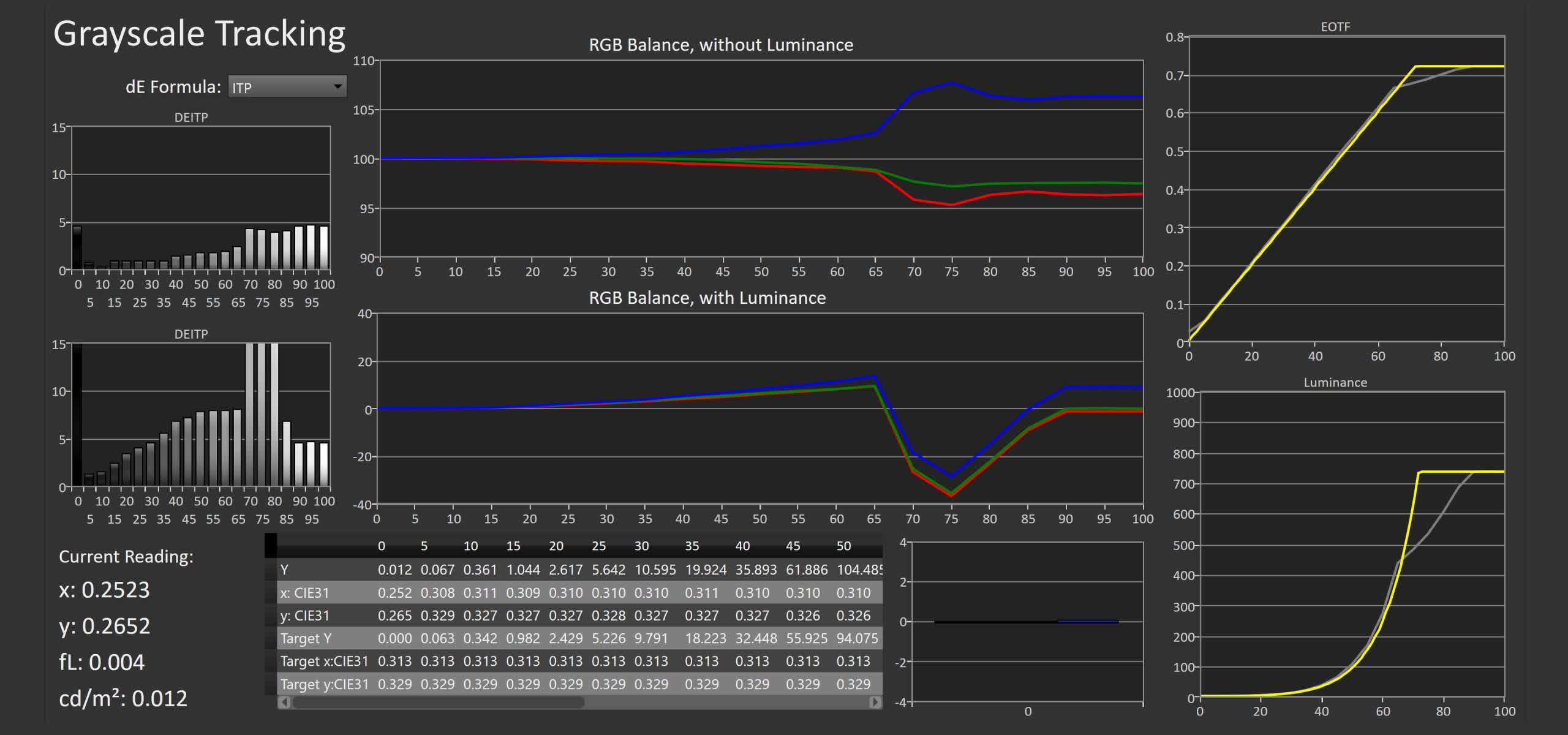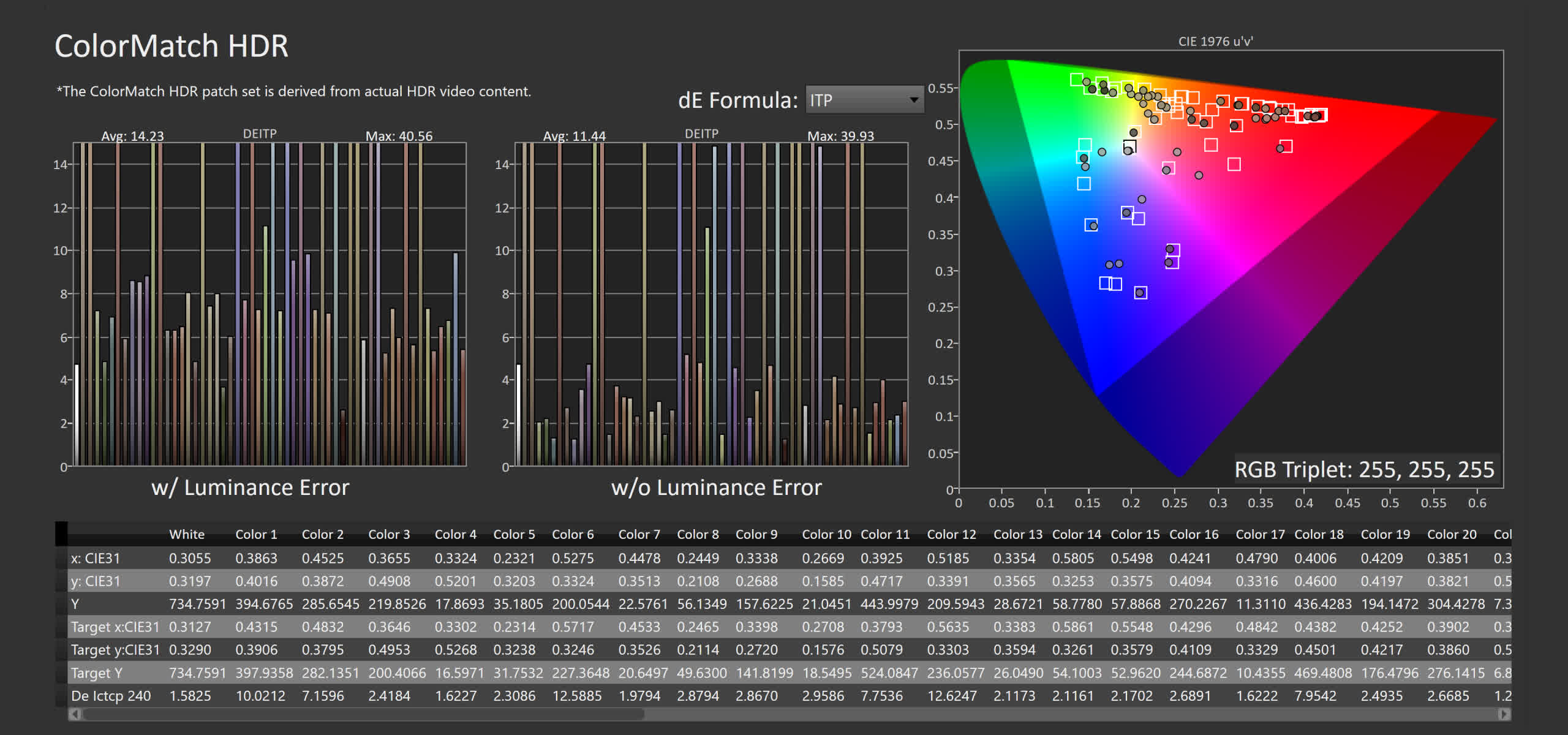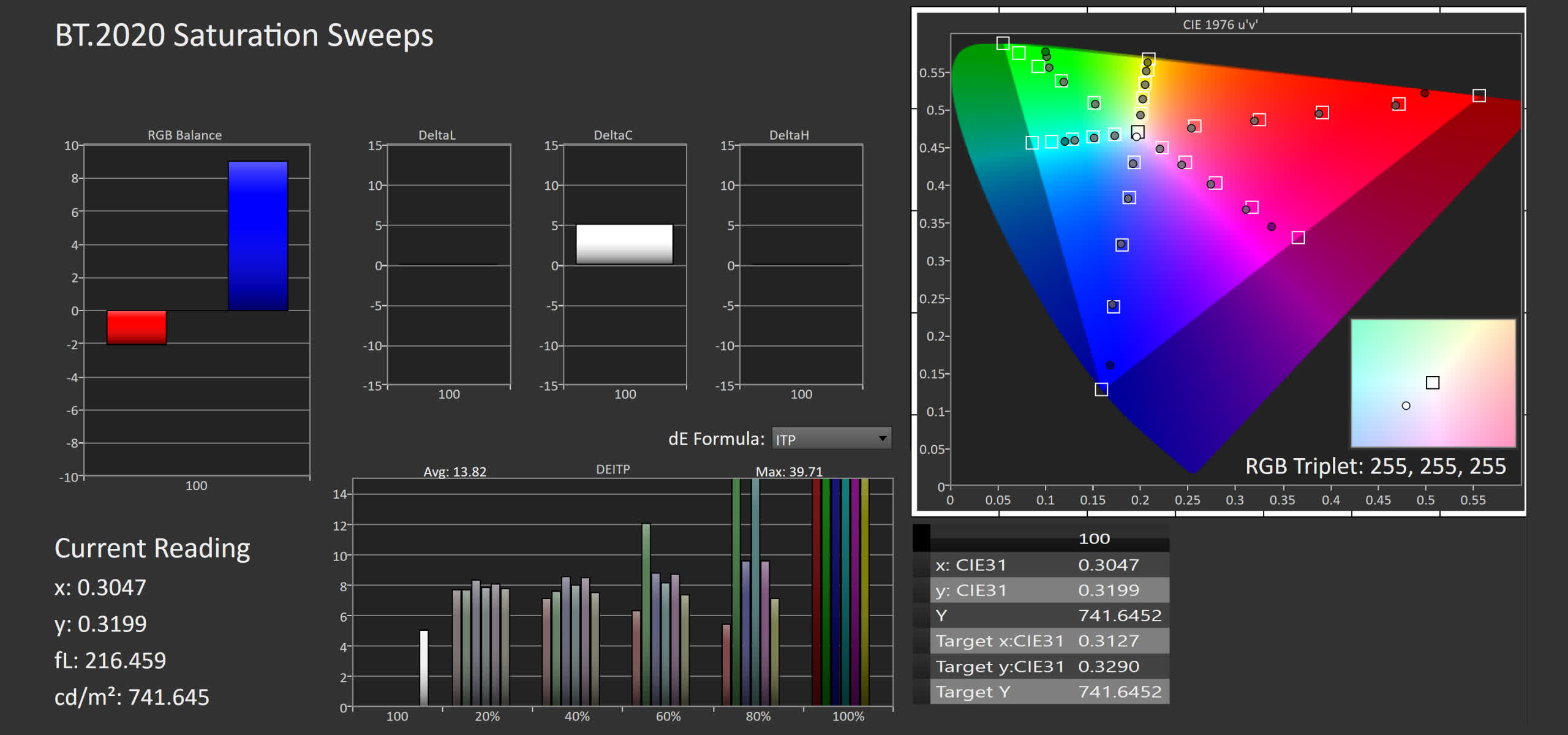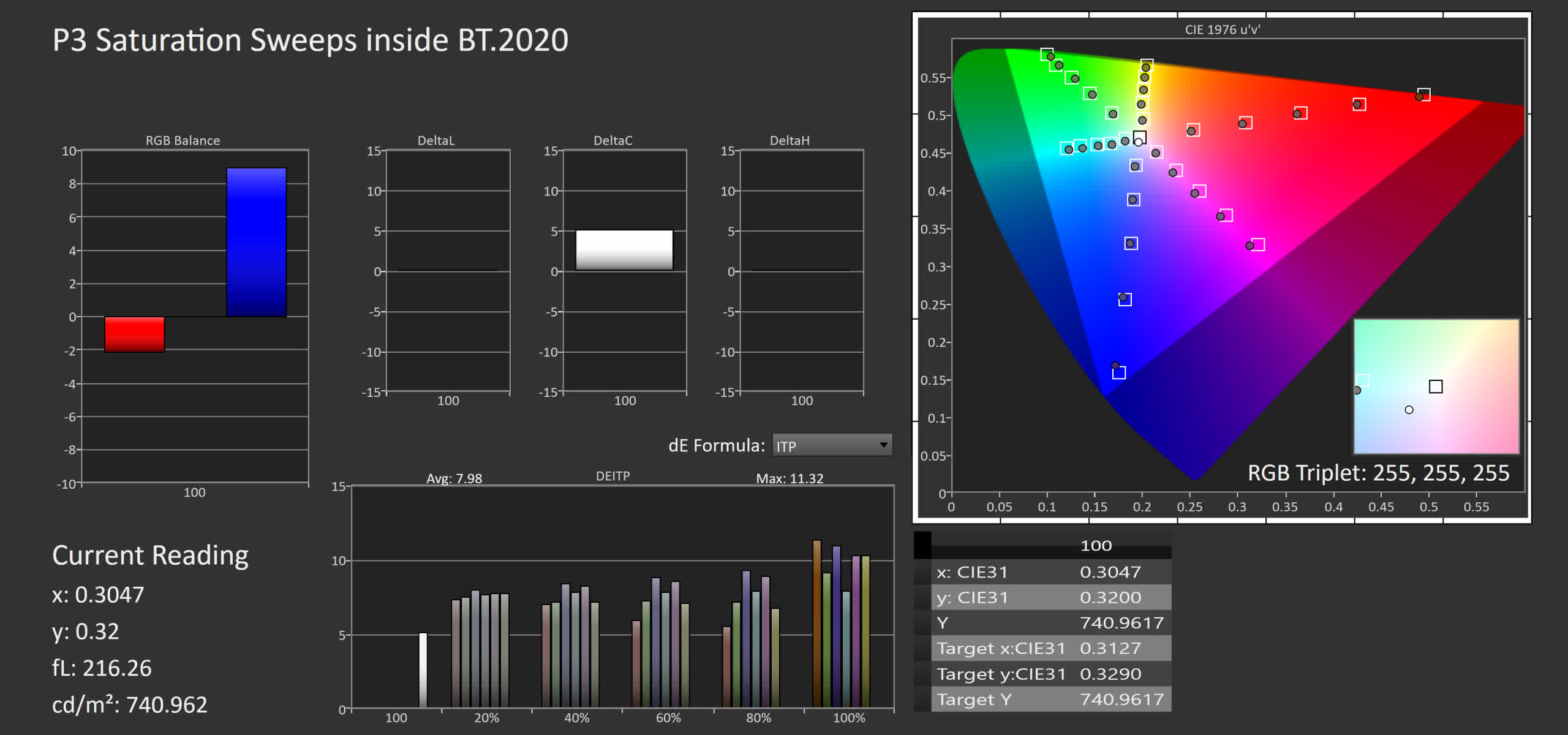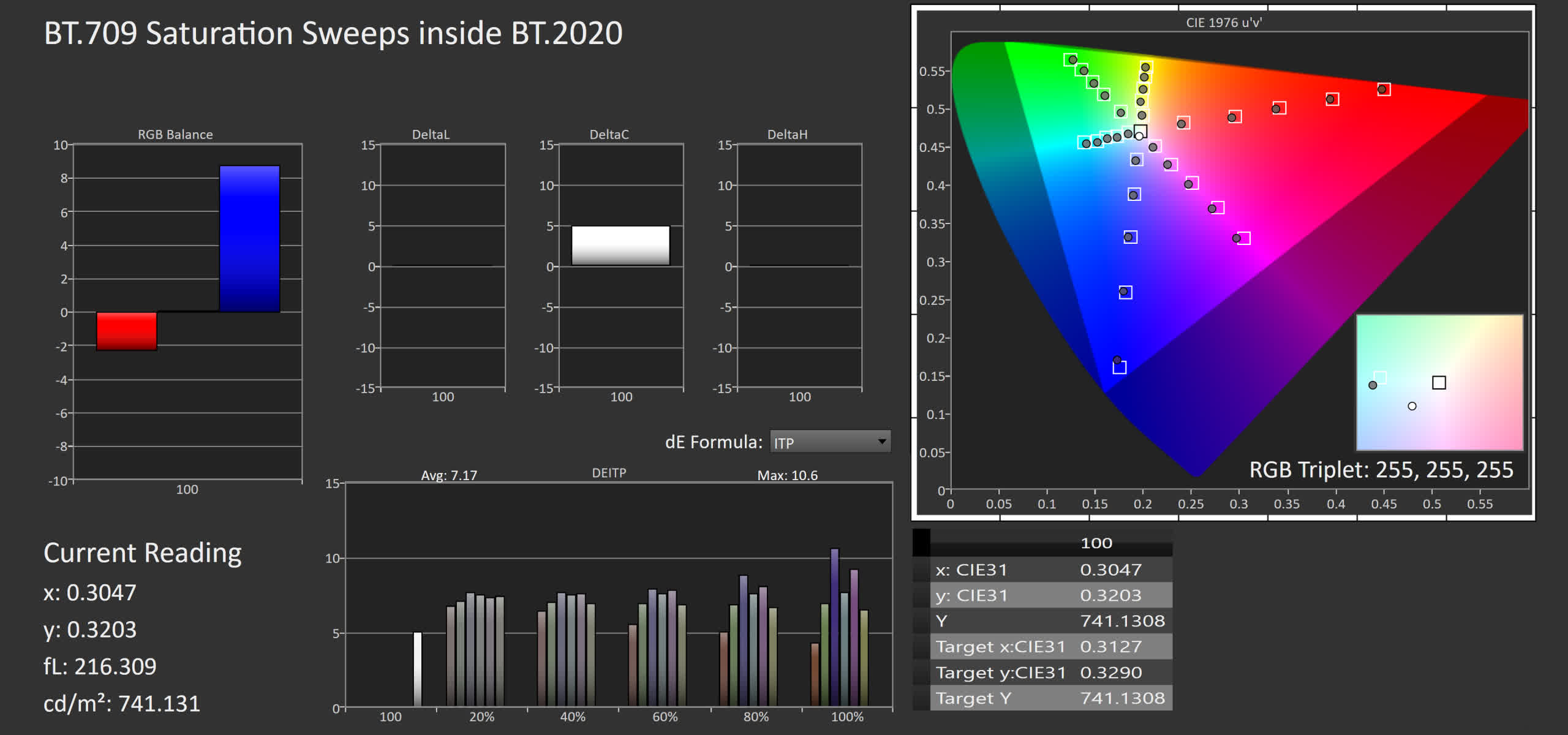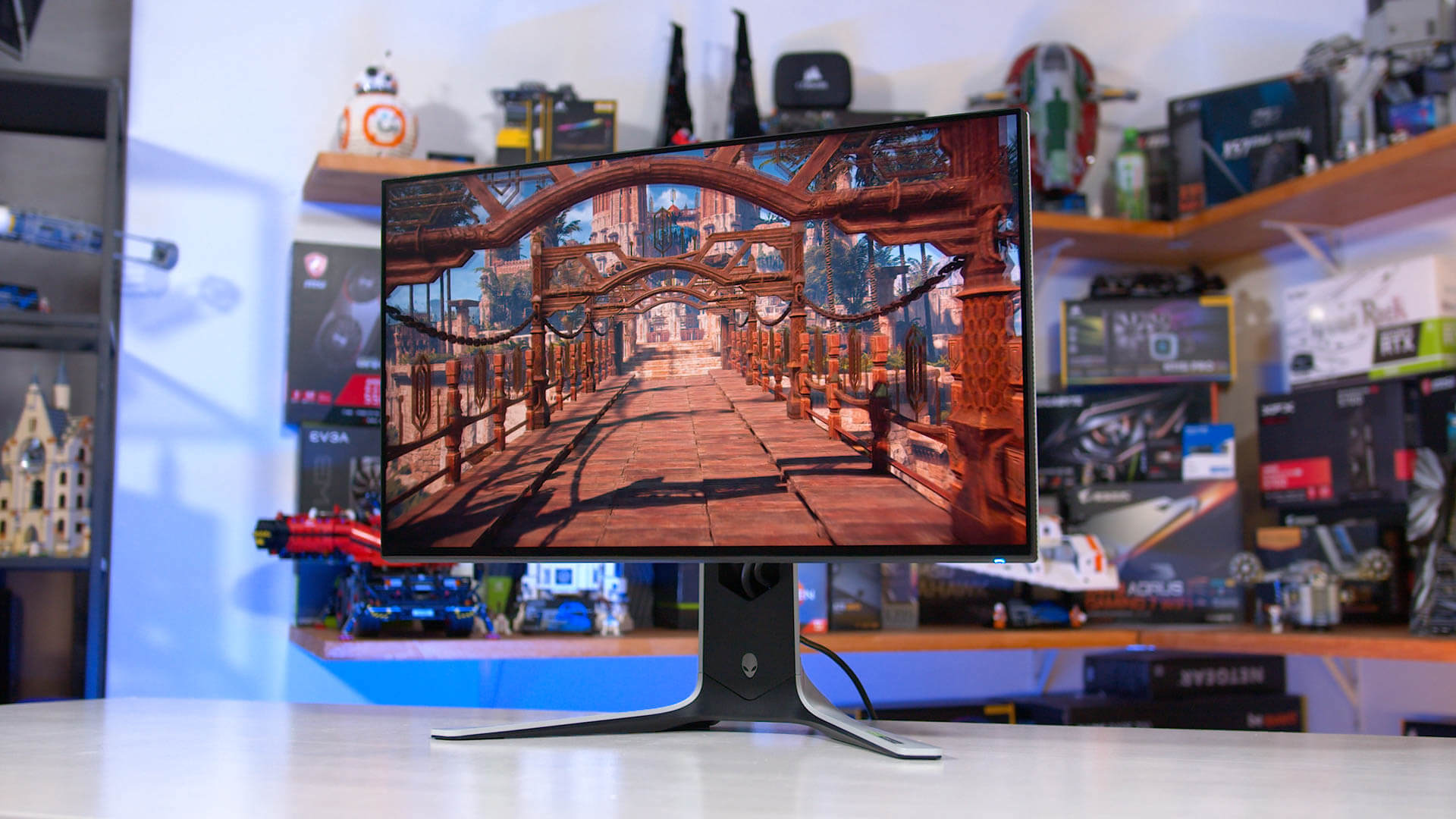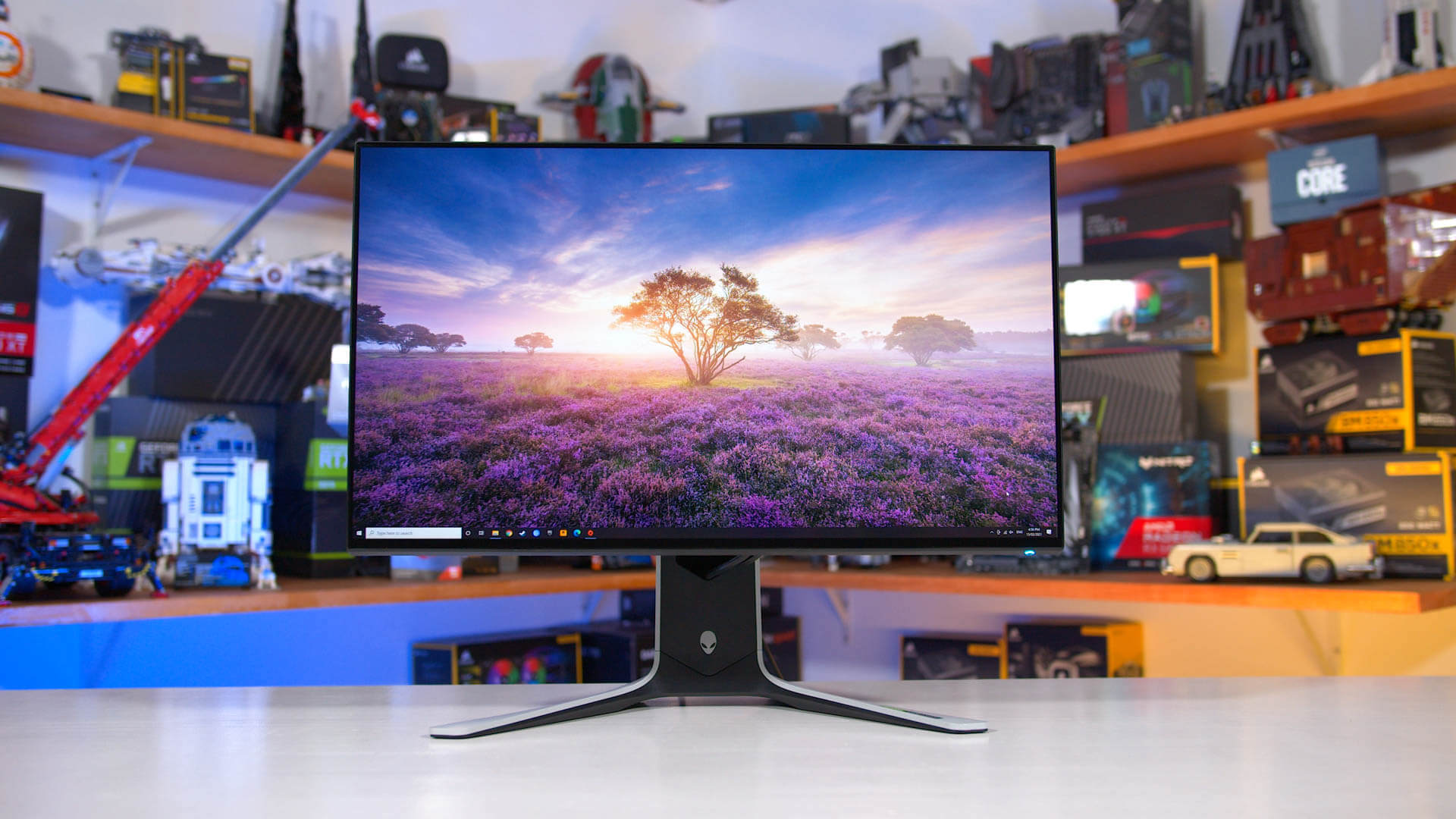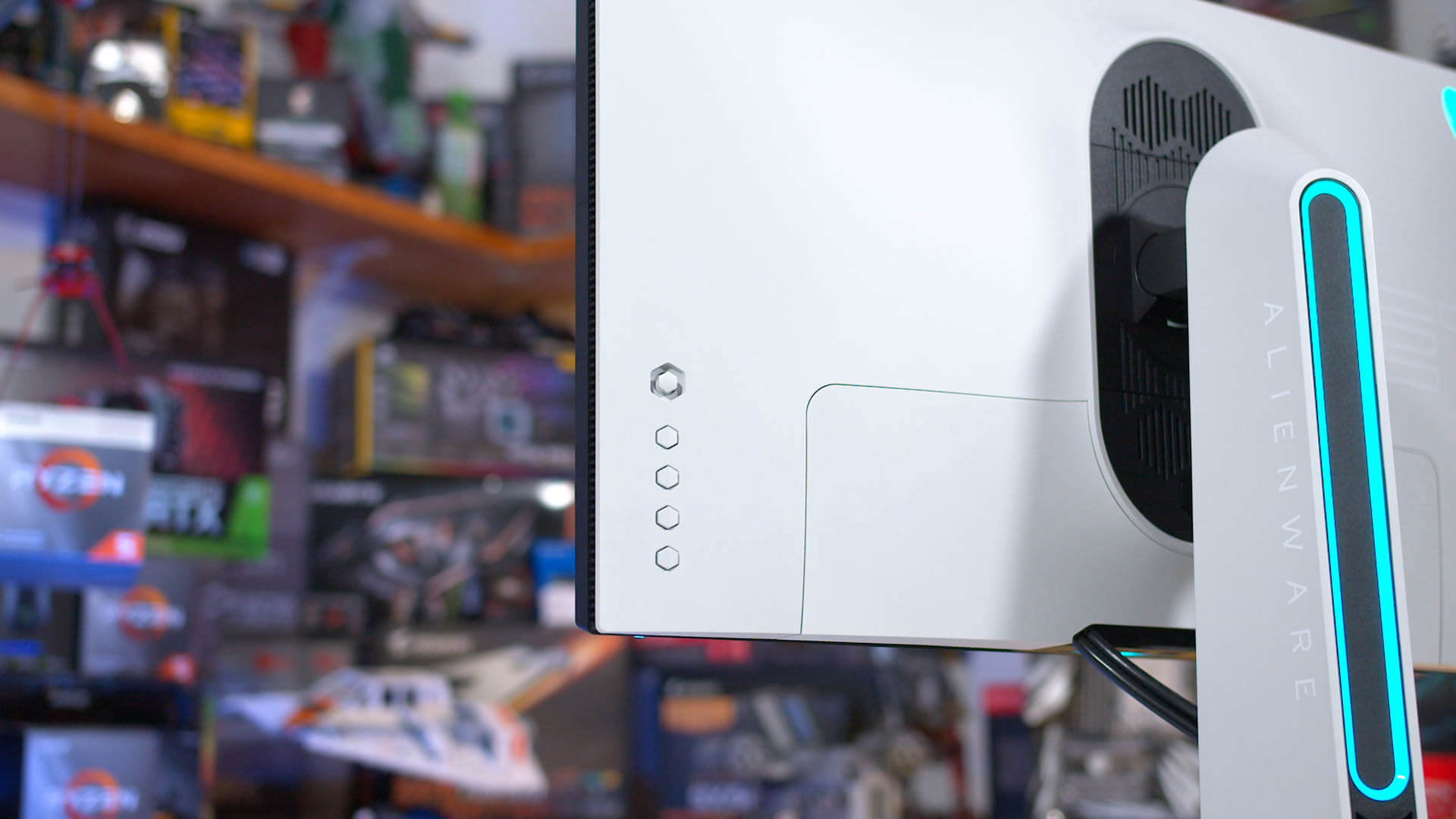We're kicking things off today with our first monitor review of 2021, we're taking a look at the Alienware AW2721D, a hot item at the moment. This is the first monitor we're reviewing using our updated test methodology for 2021. If you missed all that detail, it's well worth a watch.
The Alienware AW2721D is a new high-end 27-inch 1440p monitor, giving us our first look at the combination of a 240Hz refresh rate and IPS technology at this resolution. Alienware are touting "true 1ms GTG response time" - we'll see about that - but we do know the monitor uses a latest-generation LG IPS panel so we're expecting performance that's similar to other LG IPS products.
Another important point on the spec sheet is G-Sync Ultimate support, although it's the new watered down G-Sync Ultimate, not the high standard the program once commanded.
G-Sync Ultimate used to be for the best HDR displays on the market, but that's not the case in 2021, as the AW2721D has somehow qualified despite having just DisplayHDR 600 certification and only edge-lit local dimming. It is HDR compatible and features 98% DCI-P3 coverage, so we'll see how it performs a bit later.
With its 1440p 240Hz capabilities, this new Alienware display is competing directly with the Samsung Odyssey G7, another 1440p 240Hz display we've looked at with a curved VA panel instead. The AW2721D offers something a bit different, and it's also more expensive, currently $825 when bought directly from Dell or Amazon. The good news though, is it is actually available, which we can't say about every new bit of hardware we test these days.
The AW2721D is a large monitor for something that only has a 27-inch panel, and I'm not talking about bezels but the overall monitor body. The stand is beefy and it attaches to a rather thick display housing; the whole thing is much heavier than I expected, although this allows it to be very sturdy.
And while the majority of the outer materials are plastic, I think it looks quite premium with its mixture of black and white soft finishes. I'm not a fan of the large 27 printed onto the rear but outside of that it's a pretty clean body with some nice curves.
RGB lighting is found here, integrated into a light bar on the back of the stand as well as the classic alien head logo. This isn't a huge selling point for me, but it is something that other people find useful. Tucked neatly behind the magnetic port cover are a DisplayPort and two HDMI ports, plus some USB ports. You'll need to use DisplayPort to access the maximum 240Hz refresh rate, as HDMI is limited to just 144Hz at this resolution, and this display does not support HDMI 2.1.
Alienware are offering the full complement of adjustability, including height, tilt, swivel and pivot capabilities, so you could operate this monitor in a portrait orientation if you wanted to. The level of height adjustment is also generous and I think it's helped by having such a huge stand assembly - even though the stand legs don't take up a ton of desk space.
The on screen display is controllable through a directional toggle placed behind the monitor's bottom right corner, where you'll find a modest set of features. The color controls are a little lacking, however for gamers you do get refresh rate and timer options, though no cheat crosshairs. There's also no backlight strobing available, as the LG IPS panel has a slow red phosphor, which interferes with strobing as we've seen previously.
Alienware only offers three response time settings, however the monitor uses a native G-Sync module, so variable overdrive is a feature and thus we shouldn't have to change settings very often. So let's see how it performs...
Display Performance
At 240Hz using the lowest overdrive mode, Fast, it's clear that overdrive is indeed enabled. The reason I make this rather obvious point is that as Fast is the "lowest" mode, you actually can't disable overdrive on this display entirely. I'm not sure how many people actually would want to do that, but as you can see there is some overshoot present on the lowest mode, and without a lower setting this is the least amount of overshoot you'll see.
Is this level of overshoot problematic? Not at all. The majority of transitions are not affected by any sort of noticeable overshoot, and instead we are left with a 4.47ms grey to grey average response time, which is excellent. Using our newer test methodology which is gamma corrected and measures more of the response time curve, we do spot some slower transitions, particularly fall times that have a longer trail. However based on the displays I've tested so far, this is somewhat common for IPS panels and this is far from the worst example.
On the right you'll see our new cumulative deviation results, which measure how close the response behaviour gets to the ideal "instant" response. Given many of you won't have seen this metric before, I'll provide some context, in that scoring 414 points here is excellent and indicates a fast panel. An average result is around 600. We also get 70% refresh compliance, which using our new methodology is sufficient to call this a true 240Hz display, which is a great sign from an IPS panel.
The overdrive settings above Fast are not worth using. Super Fast does decrease response times to 3.57ms on average, but this comes with a significant increase to overshoot. As a result, our cumulative deviation numbers increase, suggesting we are further from an ideal response than in the previous mode. The Extreme mode is even worse, and to me this looks like a setting included purely to market the monitor as being "1ms" - you can see the best transitions are in the 1ms range. I'd have much rather Alienware include a mode below "Fast" with less overshoot, than bother with this "Extreme" mode that looks a lot worse.
In terms of performance across the refresh range, buyers of the AW2721D should stick with using the Fast mode, which provides a single overdrive mode experience, exactly what I'd expect from a premium display.
At times, overshoot can be a little higher than I'd like, in particular at 200Hz, but for the most part the level of overshoot is manageable and not that noticeable in practice. You can see variable overdrive at play here, especially below 100Hz, where the monitor appears to switch to a slower mode to keep overshoot in check. This is fine for lower refresh rate gaming and I'm glad it's implemented this way to prevent users from having to change overdrive settings depending on the refresh rate they are gaming at.

Comparing the AW2721D to other gaming monitors, the response time numbers are generally very solid when looking at peak performance recorded at the display's maximum refresh rate.
An average result below 5ms is elite, putting this display among the fastest I've tested. The overshoot numbers are not amazing compared to the Omen X 27 for example, however performance is a step above 144 and 165Hz displays of the past, like the LG 27GL850.

Average performance across the refresh range is also very solid, and interestingly performance is very similar between the AW2721D and Dell S2721DGF, both of which use LG IPS panels. Previous Nano IPS panels already had the response times to handle a 240Hz refresh rate, they just needed that sort of refresh rate to be unlocked, and it seems like that's basically what we are getting here.

When viewing cumulative deviation, showing how close the monitor gets to the ideal response, the AW2721D sits among a huge glut of modern IPS monitors that all deliver a similar experience, in that 500 to 600 point range when measured across their refresh range.
This Alienware monitor does benefit from an increased refresh range, and does so without negatively affecting its overall performance. However fundamentally this new 1440p 240Hz IPS panel from LG does not push IPS ahead in terms of response behavior compared to what was already on the market. That's not a bad thing at all, but those wanting an AW2721D specifically for better performance even at lower refreshes like 144Hz aren't really getting that. Again the main benefit is simply a higher refresh rate overall.

And you'll see what I'm talking about when we look at response times recorded at 120Hz. The AW2721D does deliver great performance in that 5ms range, but it's not fundamentally different to other offerings, so buyers of this display should be primarily interested in gaming above 165Hz either now or in the future.

Meanwhile, due the way variable overdrive operates on this monitor, the AW2721D is only a mid-range performer at 60Hz. You're actually better off with an LG 27GL850 for gaming in that lower refresh range, although if you wanted faster response times and were okay with much higher overshoot then you could increase the overdrive mode one notch.

Input latency is excellent at 240Hz, with practically no processing delay on the monitor's side, leaving the only remaining latency due to refresh lag and response lag. Anything below 5ms is excellent and delivers a highly responsive experience.
In terms of the best performance at 240Hz, the AW2721D isn't quite as good as the Odyssey, mostly due to higher overshoot at a similar response time average. But these displays do trade blows and the Alienware monitor isn't that far behind.
On average across the refresh range, the G7 does have a clearer edge, ending up with less overshoot and also a 10 percent faster response on average. Samsung's latest VA technology with no dark level smearing is extremely impressive, and holds up a bit better for these premium high refresh rate displays than IPS.
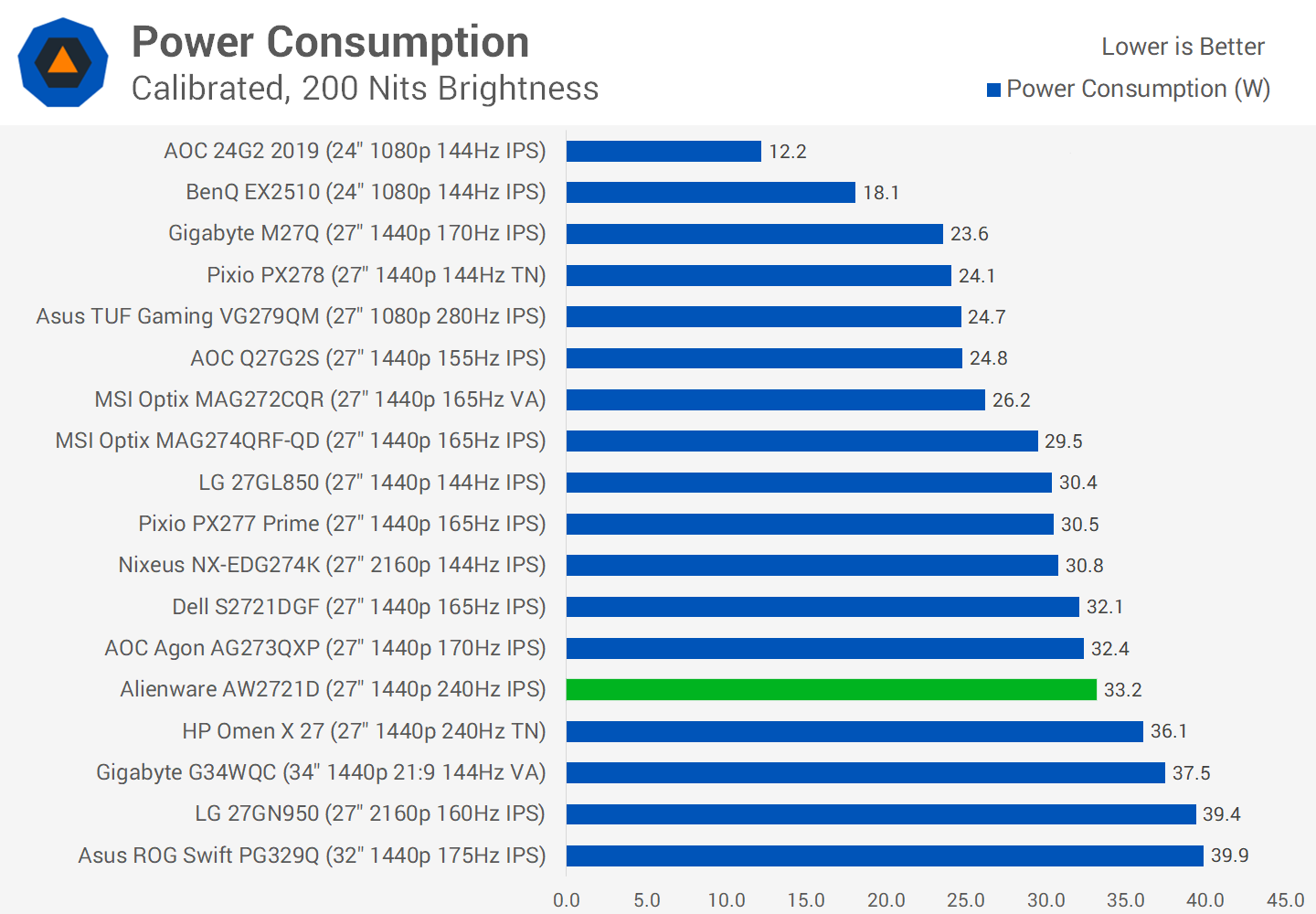
Nothing unusual from the power consumption side of things, the AW2721D is slightly more efficient than the HP Omen X 27's TN display, even factoring in RGB lighting.
Color Performance
Color Space: Alienware AW2721D - D65-P3
Moving into color performance and the AW2721D is a wide gamut display, featuring 96% coverage of the P3 color space, so that's great for creators that want to leverage this display for their wide gamut work.
However, a big negative is the AW2721D does not have an sRGB mode, so there is no way to emulate or clamp this gamut down to sRGB for viewing regular content. This will leave viewers with an oversaturated experience in many instances, especially when (for example) watching YouTube videos, something that does not play nicely with ICC profiles. This is a huge oversight for a premium monitor.
On the positive side, the AW2721D does feature excellent factory greyscale calibration. My unit had near perfect adherence to the sRGB gamma curve, and a negligible deviation from the accurate CCT curve.
This led to low deltaEs from the factory, and virtually no appreciable tint to the monitor. One thing that G-Sync Ultimate monitors tend to succeed at is factory greyscale calibration and that's no exception with this display.
Unfortunately when viewing sRGB content there is going to be some level of oversaturation. All things considered this isn't the worst result I've seen from a wide gamut display, and some people actually like this look, but it could be better.
Similar results in ColorChecker, the positive being that skin tones aren't affected significantly so it's unlikely you'll see a "sunburned" look, however oversaturation is still present.
Calibrated Color Performance
As grayscale performance is great from the factory and there's no sRGB mode, there is little that can be done in the OSD to improve performance, aside from a few minor tweaks if things are slightly off.
The next step is a full calibration and as expected I achieved excellent results. A greyscale deltaE ITP below 2.0, and strong performance in other color metrics when measuring against sRGB; no surprise as there is 100% coverage of this color space.
For P3 work we see generally strong results, although as coverage is only 96% instead of 100%, you will lose a small amount of accuracy at the top end of the saturation range. But this isn't significant enough to affect overall performance and I'd say that with calibration the AW2721D is a great monitor for P3.


When comparing factory greyscale calibration to other monitors I've tested, the Alienware AW2721D is one of the best, topping the charts as I like to see from premium displays. ColorChecker factory calibration is also not the worst, although sRGB only monitors like the BenQ EX2510 do deliver a noticeably better experience.

Maximum brightness is outstanding in the SDR mode, pushing 532 nits which is more than sufficient for indoor usage in pretty much all environments. Despite such high peak brightness, the AW2721D also delivers great minimum brightness at a touch below 50 nits, so there is a large range of values to tweak brightness to your liking.

With LG IPS panels there is always some discussion on contrast ratio, especially since the early days of monitors like the 27GL850. However since that initial release of Nano IPS displays, LG has been able to improve the contrast ratio with newer panels.
While the AW2721D doesn't have a fantastic contrast ratio, easily beaten by VA panels, I recorded roughly a 1000:1 result which is on par for a modern IPS monitor.
Viewing angles are outstanding, and LG panels remain some of the best on the market in this area. There's very little color shift when viewing at off angles which gives you the flexibility to view this display in different ways.
I was also generally pleased with uniformity, although there was some fall off along the outer edges. The central zone was great but my unit did exhibit some IPS glow in the bottom right corners, although your mileage may vary and I suspect this will improve on my sample over time.
Wrapping up our performance testing is a look at HDR. The AW2721D, despite being G-Sync Ultimate, is only a semi-HDR panel. Of the three pillars of HDR, what this monitor lacks is proper local dimming; we're getting only 32 edge lit zones, which is insufficient for producing bright highlights and deep blacks on screen at the same time, a cornerstone of an HDR presentation. In practice there is significant haloing, extending from the edges of the monitor to any bright objects, and this can be distracting and worse than no local dimming at all depending on the content.


What the AW2721D gets right is brightness. Sustained brightness of around 520 nits with a full white window is decent, and that increases to 750 nits for bright flashes, enough to dazzle in indoor conditions. The display can also sustain over 700 nits for lower window sizes, adding to a decent but not chart topping collection of brightness numbers.


In a best case scenario, the AW2721D can change from dark to bright in separate frames to good effect, delivering a dynamic contrast ratio as high as 63,000:1. However when measuring within a single frame, the AW2721D in even the best case scenario fails to reach a baseline target contrast ratio of 50,000:1 for an okay HDR experience. This is with a bright and dark object far away on the screen.

And in our worst case single frame contrast test, which measures a bright and dark object side by side, the AW2721D does not deliver an HDR experience. This is because edge lit local dimming can not sufficiently dim the screen for HDR content, so within each column zone you fall back to the display's native contrast ratio. If a panel cannot improve upon its SDR numbers in this test, it's not delivering a true HDR experience.
In terms of HDR accuracy, the display is also a mixed bag. This monitor doesn't handle brightness roll off well, so elements that should be bright are not as bright as they should be. For some reason, RGB balance also gets a lot colder at higher brightness levels, while it's decent and quite accurate at lower brightness levels.
However in the HDR mode, the AW2721D doesn't do the worst job of keeping to proper saturation performance within the limits of what the display can do. Particularly when viewing P3 and Rec.709 sweeps inside BT.2020, the results were better than I expected, so saturation tends to be quite well held in this mode and this should deliver a good color experience.
Who Is It For?
The Alienware AW2721D is a great high-end gaming monitor and one that shows the promise of IPS technology for 1440p 240Hz applications. Thanks to advancements made in the last few years, IPS is definitely fast enough for these sorts of refresh rates, and while this particular monitor doesn't set any new performance records, it was consistently near the top of our response time charts which is what buyers forking out over $800 on a new monitor will be after.
I was quite impressed with this display's versatility. With features like 96% P3 coverage, excellent factory greyscale calibration, and a nice flat panel with excellent viewing angles, the AW2721D is suitable for creative and general office work, too.
If you want a single monitor in your setup to tackle both high-end gaming and productivity, then something like the AW2721D is going to set you up perfectly now and for many years into the future. After all, hitting 1440p at 240 FPS in today's games is quite a challenge.
There are several other little bonuses sprinkled in here as well. Variable overdrive keeps performance solid across the refresh range, leading to a coveted single overdrive mode experience. Input lag is virtually zero, and the build quality was impressive and befitting of its price tag.
While on the whole this is a great display and I'm very positive about the results, there are some oversights. Not having an sRGB emulation mode in such a high-end product is a noteworthy omission. The use of an LG IPS panel prevents us from getting backlight strobing for added motion clarity. And despite being a G-Sync Ultimate display, the HDR performance on offer is poor due as we're only getting edge lit local dimming.
You can see how it stacks up here in our performance summary chart, new for this review and something we might use going forward. A couple of weaknesses shown in red but on the whole, a lot of green results indicating this monitor performs above average compared to all the other displays we've tested so far.
Alienware AW2721D Performance Summary
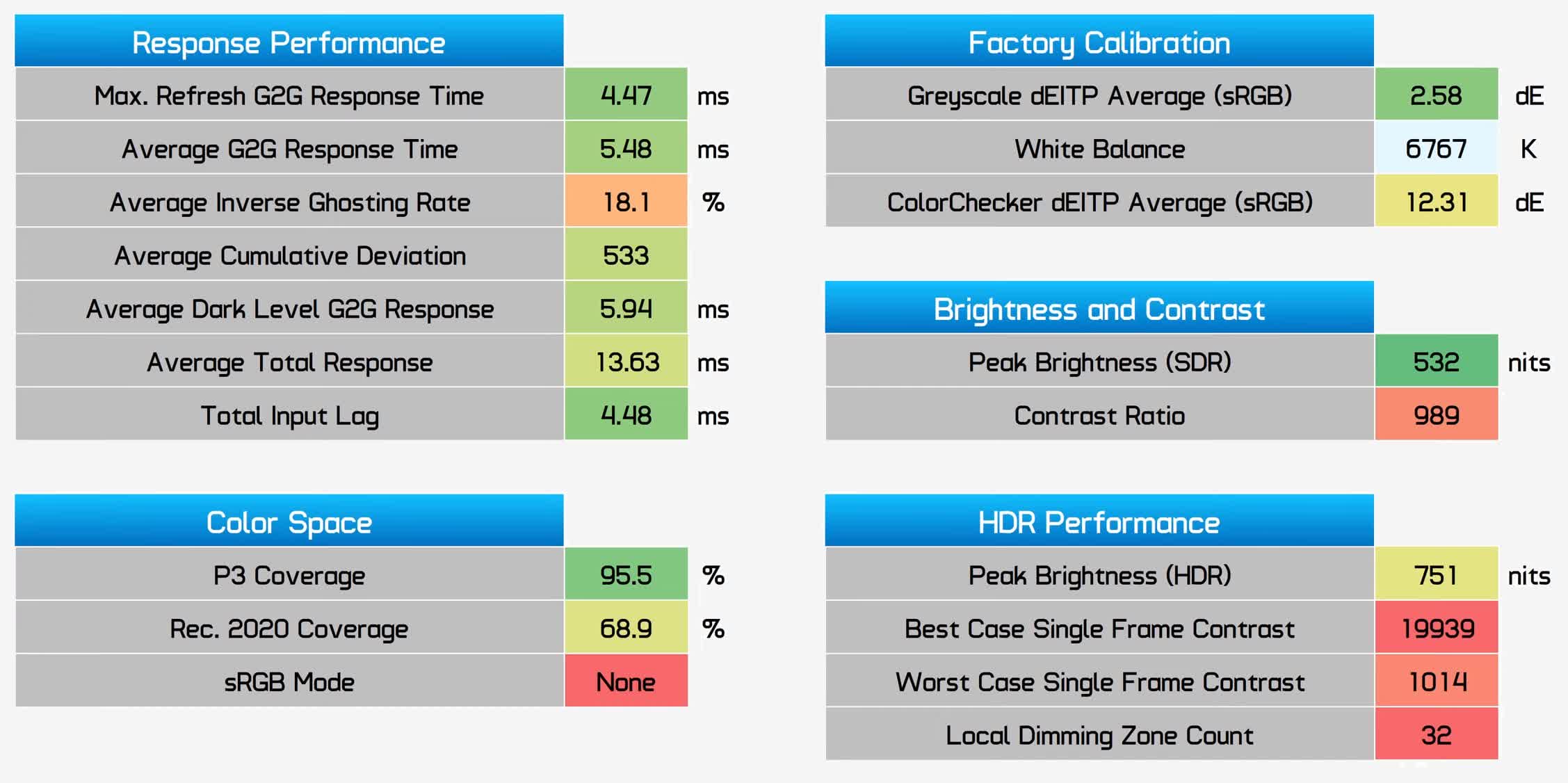
As for whether you should buy the AW2721D, I'm sure a lot of people are wondering whether to get this, or go for something like the Samsung Odyssey G7, so here's my simple breakdown as I've tested both.
If you're after just a pure gaming monitor, the Odyssey G7 is probably going to be the better option. It's cheaper, especially at 27", and features better response time results. It also has the benefit of twice the contrast ratio, and includes backlight strobing which is a feature that many people desire for its motion clarity benefits.
However the Odyssey G7 is only a gaming display. The AW2721D with its IPS panel is much more versatile and I'd recommend it for those that also want to use their monitor for other things.
The Alienware's flat panel is also much better at this size, plus you're getting better viewing angles, better uniformity, a wider color gamut and better factory calibration. All of these elements combined with response time numbers that aren't too far off the Odyssey, means it's a great balance of features.
At this price, there are a couple of other options, like going 4K 144Hz with a monitor like the LG 27GN950. But for today's gaming, I'd swing more towards the AW2721D especially as the 27GN950 lacks HDMI 2.1. High-end ultrawides may also come into consideration although at that point we're basically talking about a different monitor category.





